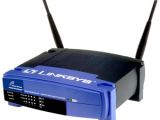Two computers exchanging data being a major success and all things working well, the industry specialists found a new challenge: losing wires. In fact the theory, around which the wireless technology was built on, was meant to solve an immediate need, and that was the access to information from any place, in any situation, using equipment which didn?t need connection through wired infrastructure.
Given the different priorities and interests of various institutions in this technology (e.g. the army was mostly interested in communication security, while libraries needed to ensure the access to an increased number of users) the initial research developed different solutions and it became clear that a standard was needed for the future of this field.
The standard was developed at the beginning of the ?90?s and was named 802.11 and includes the necessary technical specifications to create a wireless network or equipment.
Still, the 802.11 specifications failed to solve a series of problems which nobody thought of initially, therefore from 802.11 they went on to 802.11a, b, d, e, g, j, I, k, h, m, and suddenly an invention supposed to simplify everybody?s life, become confusing both for users and for those who didn?t follow closely what was happening to wireless. In 1999 two standards took on the market: 802.11a and 802.11b, which despite the fact they had different performances, were furthermore incompatible.
For example, 802.11a allowed a speed of 54 Mbytes per second data, but only on reduced distances and operated within 5.725 GHz and 5.850 GHz, which turned it into an expensive and restrictive solution. Meanwhile, although 802.11b had only a 11 Mb bytes per second speed, it compensated through longer range coverage then 802.11a, the frequency range was 2,4 GHz and also the solutions that called on 802.11b were cheaper.
802.11b was better pushed and promoted on the market, and dominated the market in 2001 and 2002. Even the term Wi-Fi ? Wireless Fidelity ? which today defines all wireless operating equipment was initially introduced to define the networking capability of the systems using this standard.
The dispute between a and b (to be sure it was a rough war indeed, meanwhile, a faster and more secure 802.11b+ than b was introduced) was settled in 2003 together with the launch of 802.11g, which become the official standard for 802.11 specifications and provided all the 802.11b and b+ benefits, was compatible with them and also provided the same speed of 802.11a.
Therefore, when speaking about networks and wireless equipment these are the most common standards. And, as if things were not complicated enough in 1998, an alliance formed by Erricson, IBM, Intel, Nokia and Toshiba introduced the Bluetooth specifications, a wireless technology conceived especially to wireless connect the mobile phones to various accessories such as wireless headsets, fax machines or even PC-s. Along with the Bluetooth 2.0 version with a 10 m coverage range, a transfer speed of maximum 2 MB per second and incomparable lower costs than 802.11, it has become obvious this was the ideal solution for the new wireless equipment generation.
Thus, if the wireless network works on a 802.11 basis, the mouse or the wireless keyboard of a PC could use Bluetooth.
As a result, Bluetooth was rapidly adopted by many equipment types, so if the PC will soon start transmitting orders to the refrigerator or the washing machine, this communication will use Bluetooth. The wireless field supporters view the Wi-Fi as a network solution, Bluetooth being saved especially for short distance, inter-equipment communication.
A new language for old functions: W-LAN card Access Point, Hot Spot
IT specialists have a distinctive pleasure to introduce and use as cryptically terms as can be, and if there was a prize to be awarded for the IT field using the largest number of notions, which would take at least a week to understand, the award would definitely go to the wireless field.
Classic networking would rather be preferred after a hard work for understanding 802.11b and g definitions, or why one is better than the other, and mainly after realizing that you are only halfway through and explanations for Access Point and others are still following.
But in fact wireless operating is very simple. Having two computers or equipments to communicate together, two wireless LAN boards are required to understand and establish the 802.11b or g transmission protocols. This equipment can be connected to any PC or laptop. Given the fact that two or more devices are usually involved in wireless communication a supplementary device is required, currently named Access Point. Any given device with wireless capability in the Access?s Point coverage area can thus be connected and communicate. Its second function is to make the liaison between wired and wireless network.
For example in order to share an Internet connection, the computer only needs to be equipped with LAN board. By communicating with the Access Point the computer will be able to share its data with all other wireless equipment, enabling in the same time the full networking of the devices and providing access to the Internet. Given the limited coverage range of a single Access Point, several more such devices are required in order to support more users and to provide a wider area of coverage. A mobile user will receive the signal from the closest Access Point anywhere in the network, the transfer from one Access Point to another coming as an automatic function.
With an increasing number of mobile users, and facing an increased appetite for wireless access, the first industries to exploit the opportunity were the hotels and the airports, and in the U.S. public places such as mall?s and coffee shops. For such environments wireless network?s installing proved to be cheaper than building classic wired structures.
Thus appeared the hot spots, equipment that ensures Internet access to users in the same coverage range, using the same principle as Access Points, the communication protocols being automatically established between the hot spot and the wireless equipment.
If hotels, airports and public places became the kingdom of wireless technology, such opportunity couldn?t be over passed by the entertainment industry. From the possibility to get wireless Internet connection from anywhere, to download music and movies through especially designed services for wireless users, and from here to developing home entertaining systems where the DVD-players networks with the TV, the sound system, the VCR and the PC, altogether and eventually to the mobile phone, was the first step this industry made. And it made it with such decision that in 2002, the wireless entertainment market grossed 1,8 billion dollars and estimations are 5,7 billion in 2007.
WiFi? Rendered obsolete! WiMAX rising!
If you thought WiFi will stop just by making you lose the wires from your house of office, you had another thing coming! Wireless technology declared war to all wires, therefore we are promised WiMAX for the next year. Still a breed of the nice family of 802.xx, WiMAX is after all a 802.16 specifications development designed to replace wired Internet. 70 kilometers coverage and 75 Mn bytes per second are the promises WiMAX made, loads faster and better than 802.11g. These is the best scenario case, one of the 140 companies participating in the WiMAX project, Intel, said that by far the best distance they were able to reach while testing, are 6 kilometers in urban areas and 20 in plain field.
First WiMAX equipment is expected on the market no earlier than 2007, while the current image of WiMAX is a high speed networking wireless solution, until the launching date the suppliers still need to decide upon the services they integrate.
Further more the 802.xx family is preparing new surprise products, in case you thought you knew all about it. The 802.20 is expected to be a protocol able to keep you online while rolling 160 MPH on a highway. The least we should fear is the exhaustion of letters / numbers / acronyms list.

 14 DAY TRIAL //
14 DAY TRIAL // 

